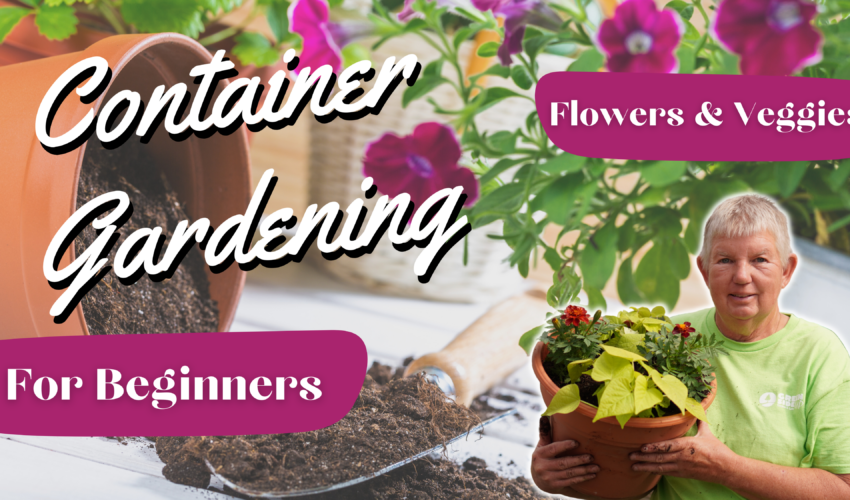
Container Gardening for Beginners
Container gardening or planting is something grown specifically in a container, pot, or even a raised garden bed! Container gardening is an excellent option for planting for many reasons. If the gardener is low on yard space, using a container to grow vegetables or other plants is a great space-saving option. Additionally, container gardening may be the only option if you don’t have a yard at all! Continue reading to learn about container gardening for beginners.
Selecting the Appropriate Container
First things first. Select the appropriate container for your container garden. Any container can be used as long as it has drainage holes. This is the most important thing to look for when searching for containers. If the container doesn’t have a drainage hole, the water will have nowhere to drain, thus killing your plants.
Secondly, select a large container for the plant or plants you are growing. It is essential to consider how large the plant will get. For example, tomato plants can grow quite large, thus requiring large pots for support. If you have multiple plants in a pot, there must be enough room for those plants to grow. On the other hand, smaller plants such as strawberries will not require as large of a pot as tomatoes.
Potting Soil and Fertilizer
It is essential always to use potting soil in your container gardens. Potting soils differ from topsoils and other various soils as it allows water to drain through. However, topsoil is dense and heavy. Therefore, topsoil tends to clump up, while potting soil does not. Additionally, potting soil is a mixture of peat moss and other organic matter, which provides nutrients to the plants.
It is essential to fertilize your container gardens. When searching for fertilizer, try to find seaweed, liquid kelp, or fish-based fertilizers.
Water Requirements
It is essential to consider the water requirements of all the plants when creating a c0ntainer garden. If you are making a flower container garden, keep plants of similar watering requirements together. For example, do not plant a fern with a cactus. These plants both differ significantly when it comes to watering needs.
